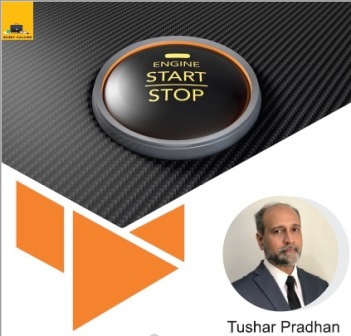By Tushar Pradhan, Chief Investment Officer, HSBC Asset Management (India) Private Ltd
The year gone by…
2017 has been a year where investors have ridden the “wall of worry”. At each juncture investors worried about a host of problems, real or imagined, logically presented or put up in fear, but what became clear as the year went by, was that investors wished they had put more money to work in risk assets.
It was a year of robust returns for global investors. Total returns have been surprisingly strong across a whole variety of asset classes. In safety asset classes, like global government bonds, we have seen positive single-digit returns and in riskier parts of fixed income, total returns have been just under 10%. Further out on the risk spectrum, total returns are even higher. Global equities have delivered over 15% and emerging markets above 30% in US dollar terms.
Closer home, Indian equity markets have performed extremely well clocking 28% on a year to date basis. Long bonds have delivered a return of 10% over the year so far. With a strong rupee the returns in fixed income for global investors in Indian bonds too have been nothing short of astonishing.
These are impressive annual returns and, in hindsight, it has been a great phase to be an asset allocator! What’s more, when we look back over the last few years, cumulative returns look pretty strong in selected parts of the opportunity set. Global equities, for example, have returned an annualized 10%+ over the last 5 years.
What to expect in 2018
As the focus shifts to 2018 it is important to take stock of what led to the runaway returns in 2017 and to assess if the same can be repeated in the current year. For starters the expected sharp interest rate hikes in the US did not materialize in 2017. Liquidity remained stable and growth began to show a synchronized uptick across major developed markets. In India inflation consolidated, domestic liquidity remained buoyant and interest rates saw a gradual fall but remained in a range for most part of the year.
Corporate earnings disappointed yet again but the sentiment in the markets was balanced by announcements of major reform initiatives in the form of the bank recapitalization scheme and GST implementation. While valuation multiples expanded, the government investments in major projects led industrial companies and certain construction companies to record significant gains. The global materials price uptick also led certain material companies to perform well in 2017.
Of the above, while not much is expected to change, i.e. liquidity remaining benign, growth continuing to be clocked at a healthy pace across major economies and the US fed hikes remaining cautious, there are some factors that can spoil the party this year.
In India the Gujarat elections have set the tone for much contemplation of the real message from the people in the home state of the Prime Minister. This election result was seen to be a barometer of public reaction to the reform process of the government. The subsequent acquittal of the major accused in the 2G telecom spectrum scam has also made some interesting side stories to the political debate. The market however has remained indifferent to both events and they have largely fallen in “neutral” territory without shaping any clear direction either to public opinion or to the popularity of the ruling party. North Korea and the fresh turmoil in the Middle East will continue to be geopolitical irritants and can threaten to become center stage at any time. Interest rates in India will be range bound with short spurts of easing on the back of news flow and vice versa. However we do not expect them to rise substantially in the near future and nor do we expect a steep fall in the same.
Earnings growth in India is likely to remain strong into the second half of this year and well into the next financial year. However valuations remain higher than historical range vis-à-vis earnings. The expected increase in RoE’s following margin expansion and lower rates of interest signal a stable environment in spite of the ostensible expensive multiple on earnings. Price to book multiples however are well within the long term averages and the market may be pricing in a much stronger recovery than in the estimates so far. We do expect market volatility to be driven by political and geopolitical events as and when they occur during the year but we do not think fundamentals to deteriorate very significantly. Can this lead to higher market levels is however a moot point given current market valuations.
Conclusion and Asset View
We conclude that the earnings recovery will bring earnings multiples down, though not in line with long term averages. We believe, market returns will stay positive though will not touch the levels seen this year and interest rates will remain in a range. Increasing domestic and foreign participation may yet provide opportunities for higher than average multiples to sustain and as a result, given a penchant for volatility investors could choose to remain invested in the equity asset class as it may yet provide the highest returns across available asset classes this year. Intermediate bonds are likely to remain a fairly attractive asset class on a relative basis.

